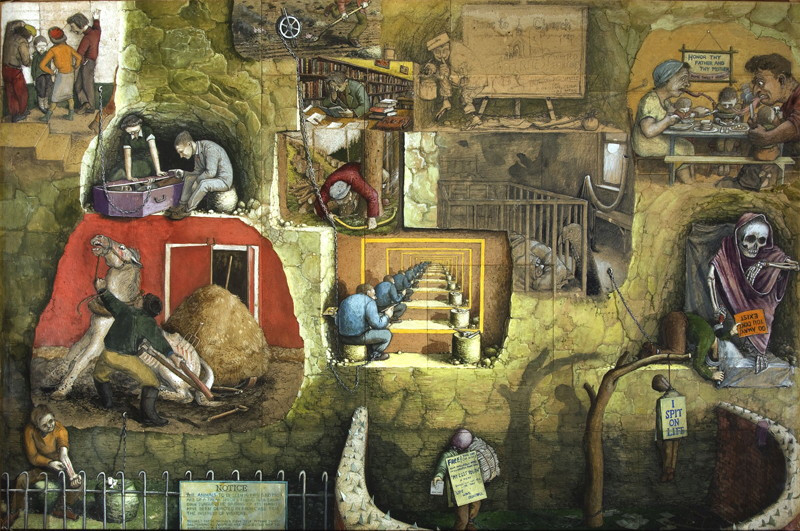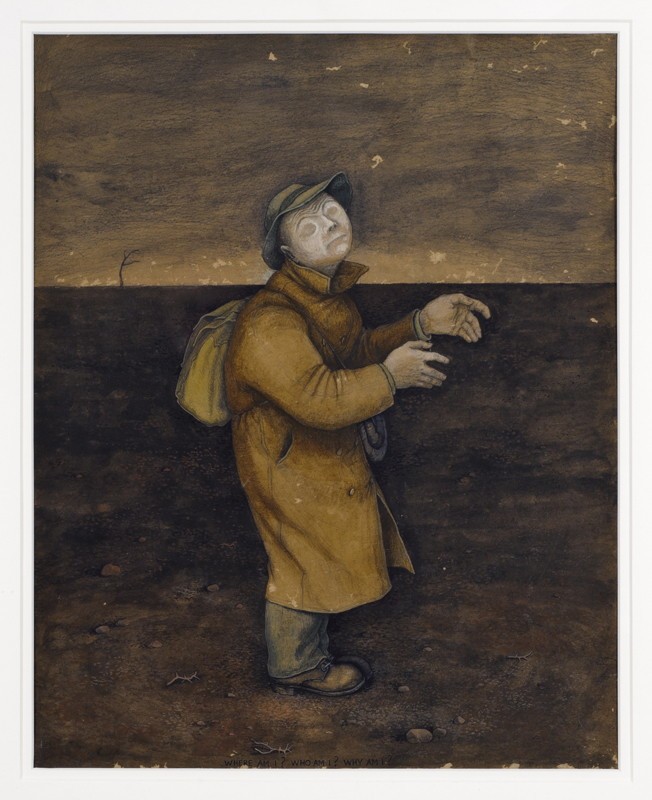William Kurelek: The Messenger
Famed Stonewall artist’s work displays social critique that’s still relevant more than 30 years after his death
The Winnipeg Art Gallery’s latest exhibition, The Messenger, examines the famed work of one of Canada’s most polarizing, yet prized, artists - William Kurelek.
Fittingly, Kurelek grew up on a farm in Stonewall, less than an hour away from the establishment that now houses the largest display of his works ever to be seen.
With 85 pieces grouped into eight categories, the exhibition’s organization mirrors one of Kurelek’s early artistic themes: The Maze.
The core motif he drew upon repeatedly in his first collection Who Am I? Where Am I? Why Am I? is most explicit in The Maas Maze (1971), an intricate depiction of Kurelek’s brain that reveals insight into his grotesque thoughts.
What makes the series so disturbing is the vague line it straddles between real and surreal. Often times, the artist recalls his past torment to recreate scenes such as those in Maas Maze.
Be it a boy getting bloodily beaten up amongst a crowd of bystanders, or a grown man being prodded by hoards of doctors in a hospital, Kurelek (presumably) lived these experiences.
In the same tableau there’s a man skinning his arm with a blade while studying an anatomy book.
“ Kurelek was doing most of his work when globalization was just beginning. He was painting after the Cuban Missile Crisis, when people believed ‘The end is nigh!’ and you can feel the anxiety still.
Andrew Kear, curator of historical Canadian art, WAG
If you are willing to ask what the dark and twisted imagery might mean, the viewing experience is intriguing and eye opening, especially towards issues of mental health.
Kurelek sadly fit the definition of “tortured artist” too well. He committed himself to psychiatric care in London, England from 1952 to 1954 and attempted suicide in ‘54, an episode he foreshadowed a year before in painting I Spit On Life.
Later, the Ukrainian farm boy reestablished his prairie roots to paint another series, Big Lonely. This sequence portrays quiet landscapes featuring few characters amid fields of wheat and snow.
Of this category, Despondency (1963), an image of a lone farmer standing in his flooded crops, is most poignant.
Our World Today (1968) is a satirical stab at human morality. The painting’s description quotes Kurelek describing humanity as “a child playing in a burning barn, blind to its own mistakes and to the world’s suffering.”
Andrew Kear, curator of historical Canadian art for the WAG, describes Kurelek’s work as very narrative and interactive.
“You can go in close to see the details, and step back to get the whole picture,” he says. “The website (www.kurelek.ca) is a great addition and allows people who can’t make it to Winnipeg, Victoria or Hamilton (the show’s three stops) to access the exhibit from home.”
Of course, if you can make it down to the gallery, you definitely should. There is no substituting seeing Kurelek’s flawed intricacies in person.
“There’s something about the kind of social critique that goes on with Kurelek that’s definitely relevant to today,” Kear says. “Kurelek was doing most of his work when globalization was just beginning. He was painting after the Cuban Missile Crisis, when people believed ‘The end is nigh!’ and you can feel the anxiety still.”
William Kurelek: The Messenger is at the Winnipeg Art Gallery until Saturday, Dec. 31. Visit www.wag.ca or www.kurelek.ca for details.
Published in Volume 66, Number 10 of The Uniter (November 2, 2011)








